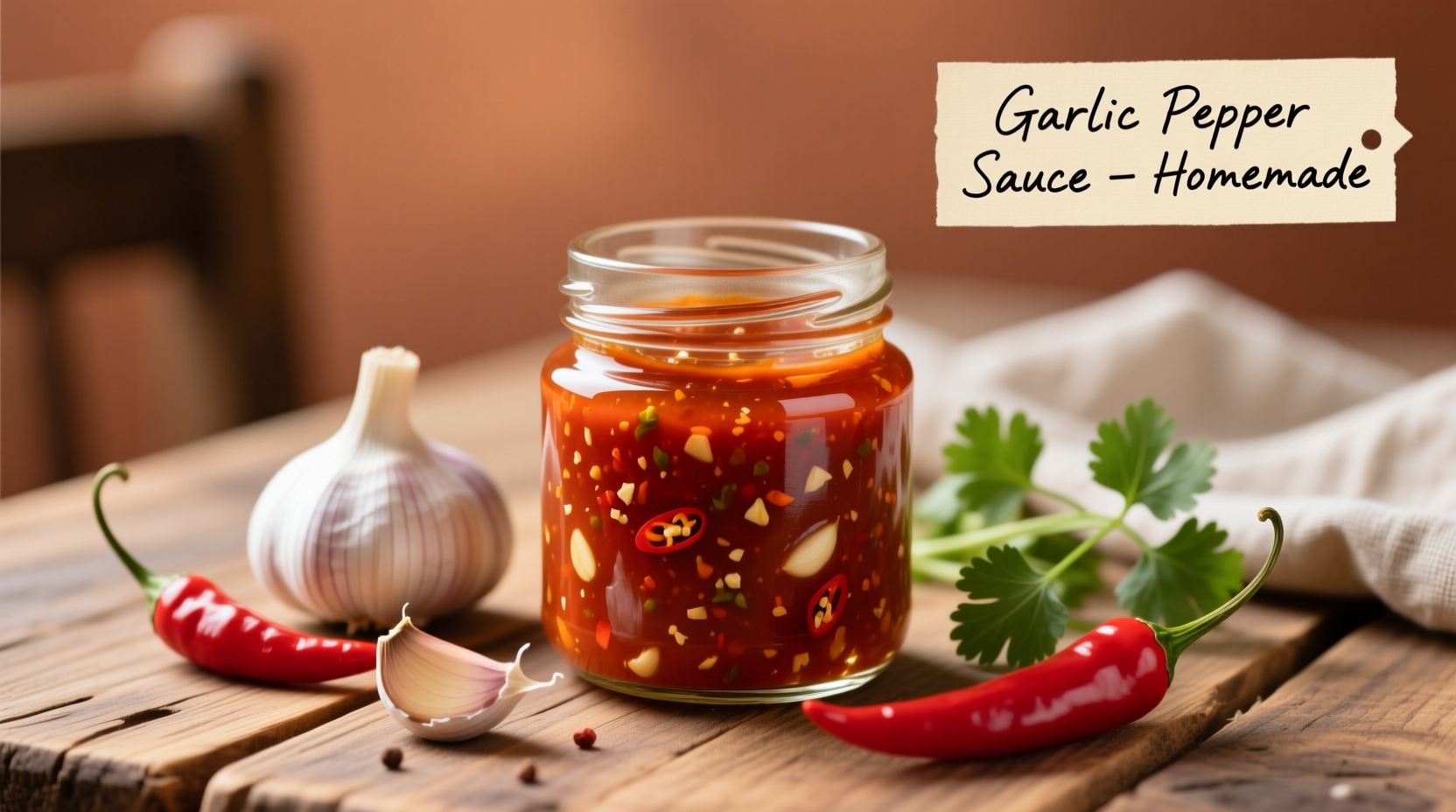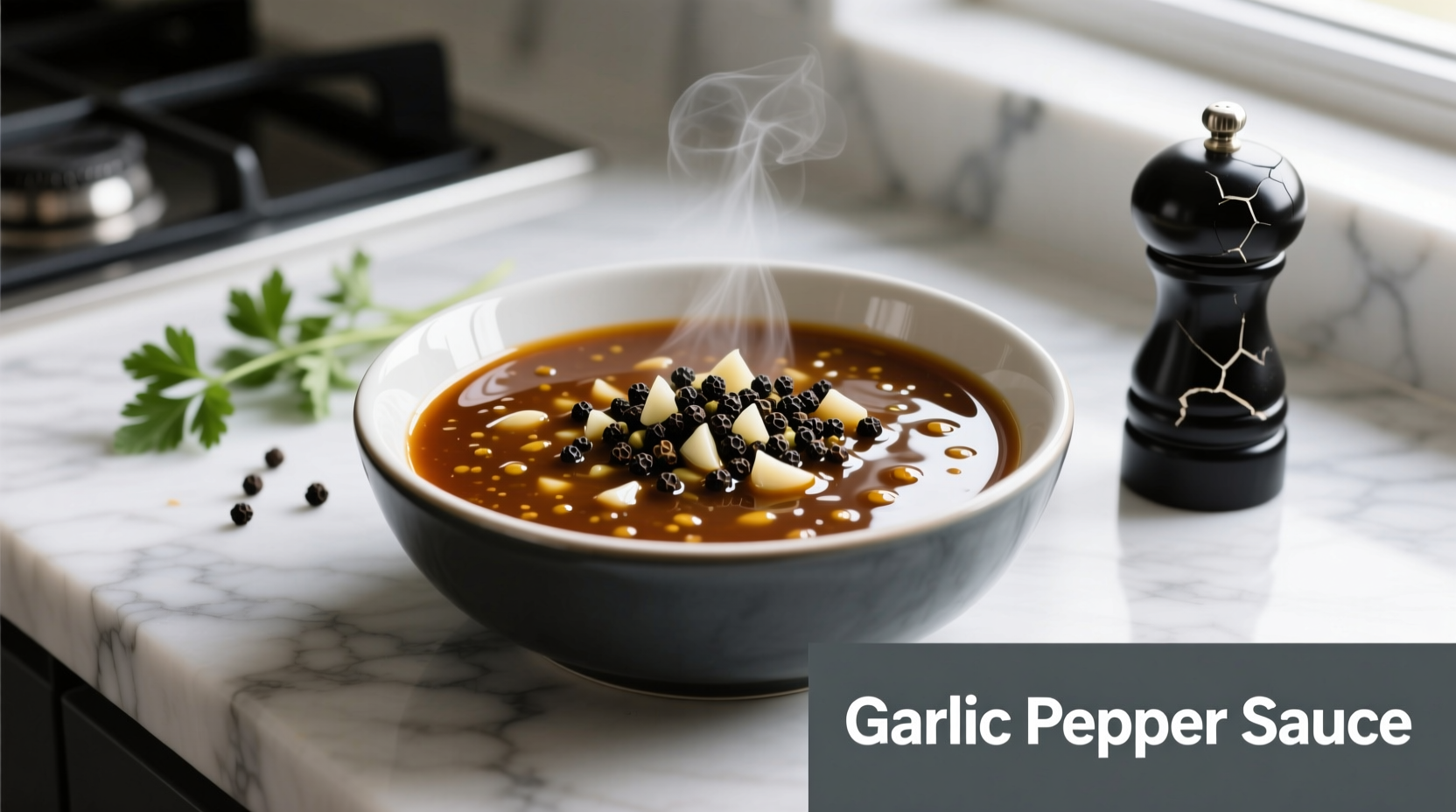The Essential Flavor Profile of Garlic Pepper Sauce
Garlic pepper sauce delivers a dynamic flavor experience that balances three key elements: the sharp, sulfurous punch of raw garlic; the warm, slightly floral heat of freshly cracked black pepper; and the unifying richness of oil. When properly prepared, these components create a harmonious blend where neither garlic nor pepper dominates. The magic happens through enzymatic reactions—when garlic is crushed, alliinase enzymes convert alliin to allicin, producing that characteristic pungency, while black pepper's piperine compounds activate thermoreceptors, creating that familiar warming sensation.
| Ingredient Ratio | Flavor Outcome | Best Applications |
|---|---|---|
| 3:1 garlic to pepper | Garlic-forward with subtle heat | Seafood, roasted vegetables |
| 1:1 garlic to pepper | Perfect balance | Chicken, pork, stir-fries |
| 1:3 garlic to pepper | Pepper-dominant with garlic notes | Steak, hearty grains, robust dishes |
Historical Journey of Garlic and Pepper
Understanding garlic pepper sauce requires examining its two star ingredients separately before they united in modern kitchens. Garlic has been cultivated for over 5,000 years, with early records showing its use in ancient Egyptian, Chinese, and Indian civilizations—often valued as much for medicinal properties as culinary ones. Black pepper, meanwhile, traveled the ancient spice routes from southern India, becoming so valuable in medieval Europe it was literally used as currency ("peppercorn rent"). The combination emerged more recently as global trade made both ingredients widely accessible. Food historians note that garlic pepper blends became particularly popular in American kitchens during the 1980s restaurant boom, when chefs sought simple yet distinctive flavor enhancers.
When Garlic Pepper Sauce Shines (and When It Doesn't)
While versatile, garlic pepper sauce has specific culinary boundaries where it performs best:
- Ideal applications: Perfect for proteins like chicken thighs, pork chops, and salmon where its bold flavor can penetrate without overwhelming. Works beautifully as a finishing touch on roasted vegetables or mixed into grain salads.
- Limited effectiveness: Avoid using with delicate fish or subtle-flavored vegetables like zucchini, where it may dominate. Not recommended for sweet applications or desserts.
- Storage limitations: Fresh garlic pepper sauce maintains peak flavor for just 3-4 days refrigerated due to enzymatic breakdown. For longer storage, increase acid content with lemon juice or vinegar.

Professional Technique: Building Flavor Layers
Chef Antonio Rodriguez explains the professional approach to maximizing flavor: "The order of operations matters more than most home cooks realize. Start by gently warming your oil—never heating to smoking point—as this activates the oil's flavor-carrying capacity. Add coarsely cracked pepper first, allowing 30 seconds for the volatile oils to release before introducing minced garlic. This sequence prevents garlic from burning while ensuring pepper's complex flavor compounds fully develop."
For restaurant-quality results at home, follow these steps:
- Use freshly cracked black pepper (pre-ground lacks volatile oils)
- Minimize garlic to small, uniform pieces for even flavor release
- Warm oil to 250°F (121°C) before adding ingredients
- Remove from heat just before garlic reaches golden stage
- Cool completely before storing to prevent continued cooking
Common Mistakes That Ruin Garlic Pepper Sauce
Even experienced cooks make these critical errors:
- Burning the garlic: Garlic scorches at 300°F (149°C), turning bitter. Always add it after pepper has had time to infuse the oil.
- Using pre-minced garlic: Jarred garlic contains preservatives that alter flavor chemistry and lacks enzymatic freshness.
- Incorrect pepper ratio: Too much pepper overwhelms, while too little disappears against garlic's intensity. The 1:1 ratio works for most applications.
- Adding salt too early: Salt draws moisture from garlic, accelerating enzymatic breakdown and creating off-flavors.
Storage Science: Maximizing Freshness
Food safety research from the USDA's Food Safety and Inspection Service confirms that homemade garlic-in-oil mixtures require careful handling due to botulism risk. To safely store garlic pepper sauce:
- Always refrigerate below 40°F (4°C)
- Use within 4 days for maximum safety and flavor
- Never store at room temperature for more than 2 hours
- Add 5% acidity (lemon juice or vinegar) to extend shelf life to 7 days











 浙公网安备
33010002000092号
浙公网安备
33010002000092号 浙B2-20120091-4
浙B2-20120091-4